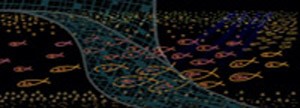Databases:
Scientific Surveys information cover in the Flemish Cap a range of years between 1977 and 2013. From 1977 to 1985 the Department of Fisheries and Oceans of Canada DFO conducted annual bottom trawl surveys on February. Data were collected in this survey in a set by set basis: catches by species, size distribution, biological sampling (maturity state, otoliths (ageing), size, weight), stomach content and oceanographic conditions. Since 1988 upto nowadays a new series of bottom trawl surveys started, conducted annually on July result of the collaboration of the Institute of Marine Research of Vigo (IIM-CSIC), the Fisheries Technological Institute of the Basque Country (AZTI-Tecnalia up to 2008), the Spanish Institute of Oceanography (IEO) and the Portuguese Sea and Atmospheric Institute (IPMA). Both the Canadian and EU databases will be the basis to develop the GADGET multiespecies model for the Flemish Cap.
In addition to the database from the EU and DFO surveys, scientist observers from the IIM and the IEO onboard of Spanish commercial vessels have collected information about catches, size distribution and biological data that will be the basis to model the fishing activity in the Flemish Cap, in conjunction with the aggregated information presented to NAFO by other countries.
GADGET multispecies stock assessment model:
In the past decades an increasing number of multispecies models have been created (Pinnegar et al. 2008). GADGET(Globally applicable Area Disaggregated General Ecosystem Toolbox) is a powerful and flexible framework that has been developed to model marine ecosystems within a fisheries management and biological context. GADGET allows the user to include a number of features of the ecosystem into the model: one or more species, each of which may be split into multiple components; multiple areas with migration between areas; predation between and within species; growth; maturation; reproduction and recruitment; multiple commercial and survey fleets taking catches from the populations (Begley and Howell 2004). GADGET has been considered by the FAO the best model with the greatest potential for practical advice in multispecies fisheries management (Plagányi 2007). These models have been used to evaluate cod-capelin-shrimp interactions in Icelandic waters, cod-whiting-blue whiting in the Celtic Sea, and cod-capelin-herring-minke whale in the Barents Sea or hake-anchovy in the Bay of Biscay (Pinnegar et al. 2008).
